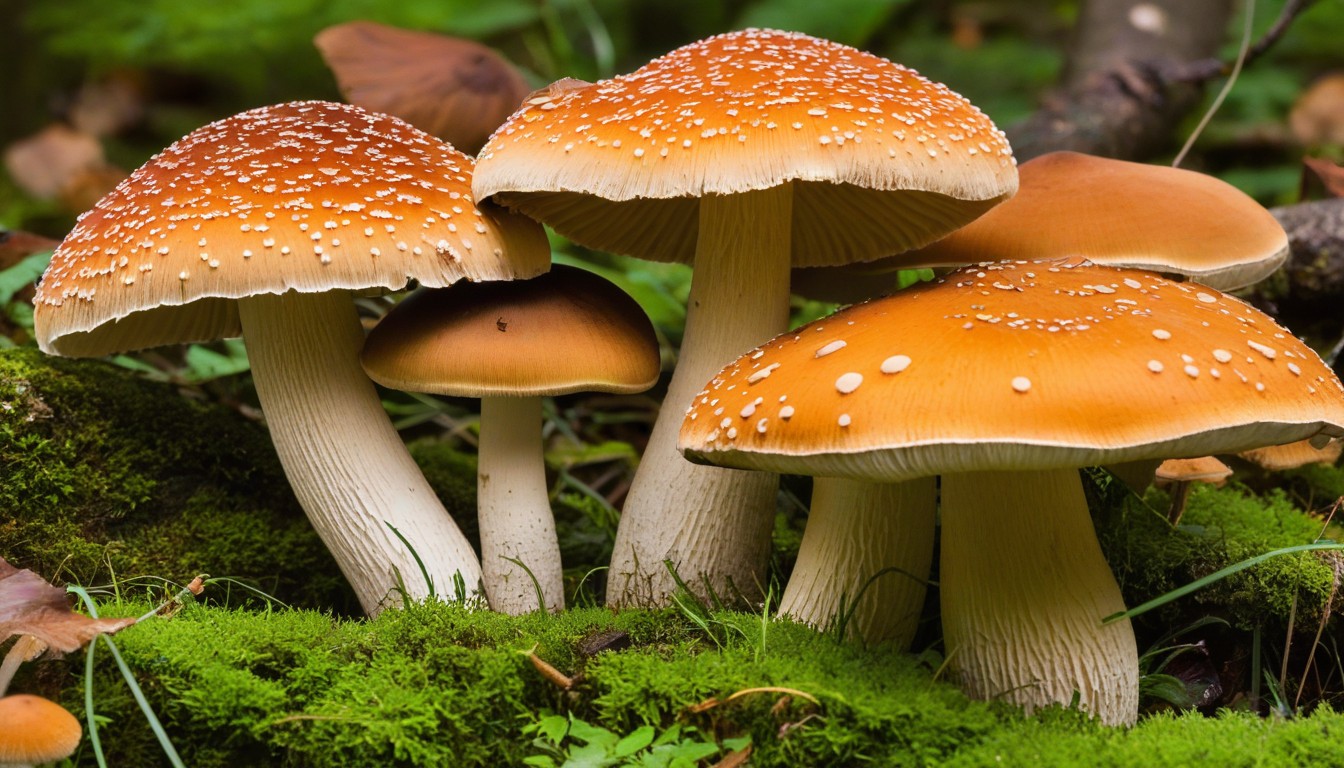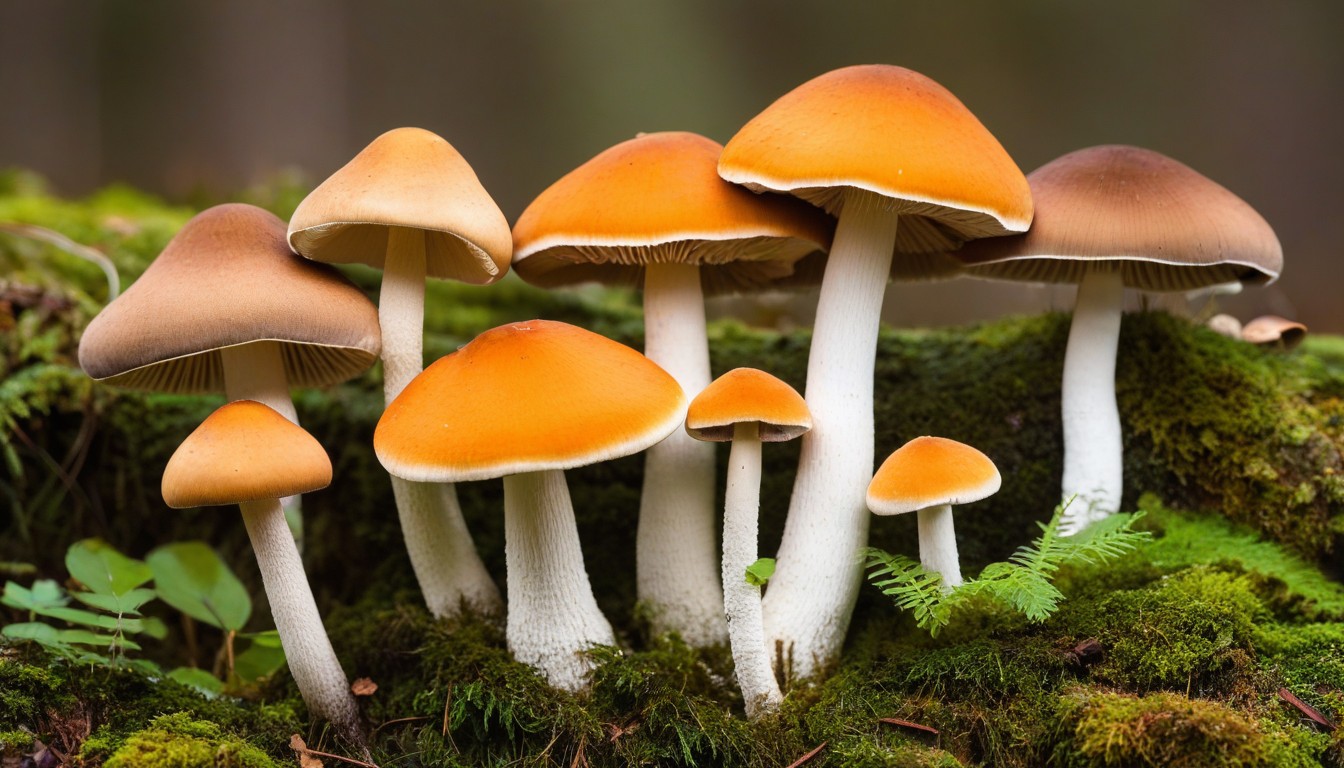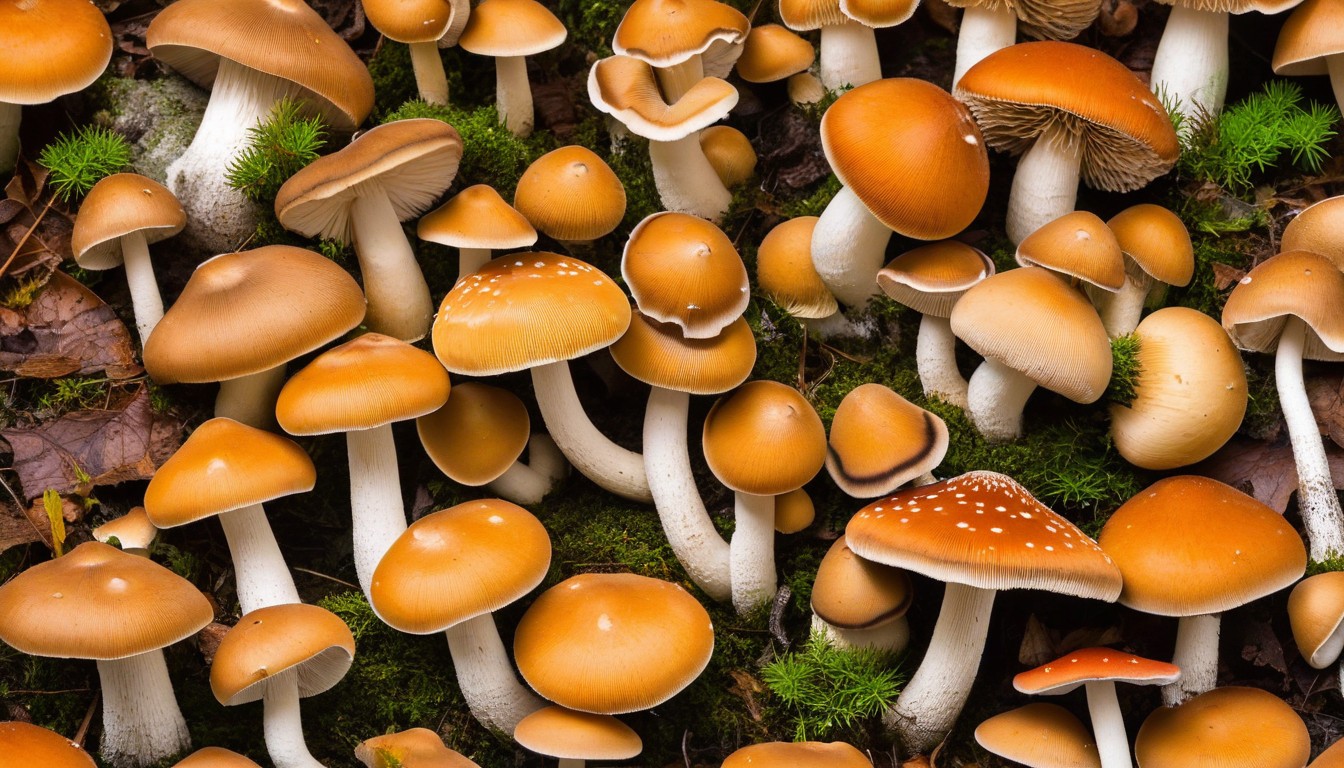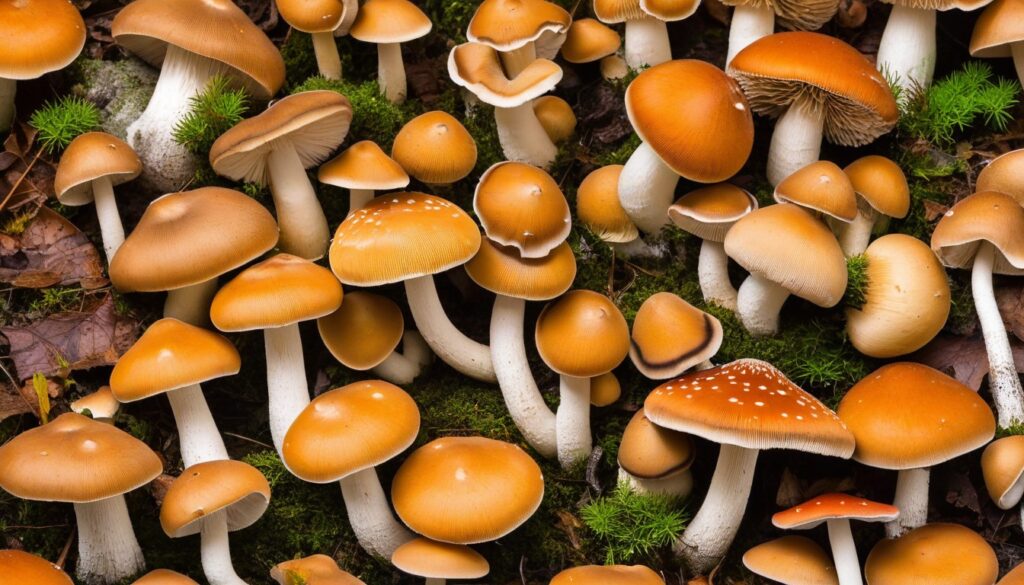Welcome to our guide on foraging for edible mushrooms in Iowa. Iowa is home to many different mushroom species that are both delicious and nutritious. However, it is essential to take appropriate safety precautions when foraging to avoid poisonous varieties.
This guide will provide you with all the necessary information you need to know about foraging for edible mushrooms in Iowa, including safety precautions, popular varieties, and the best spots to forage. You will also learn valuable tips and techniques for successful foraging and how to preserve and cook the mushrooms you find.
Key Takeaways:
- Foraging for edible mushrooms in Iowa can be a fun and rewarding activity.
- It is essential to take appropriate safety precautions when foraging to avoid poisonous varieties.
- Iowa is home to many different delicious and nutritious mushroom species.
- The best times to forage for mushrooms in Iowa are in the spring and fall.
- Joining a local foraging community can help you learn more and connect with other mushroom enthusiasts.
Why Forage for Edible Mushrooms?
Foraging for edible mushrooms in Iowa is a rewarding experience that offers several benefits to both the forager and the environment. Here are some compelling reasons to start mushroom hunting:
- Connecting with nature: Foraging involves spending time outdoors, enjoying fresh air and exercise, and reconnecting with nature.
- Local and sustainable food sources: Foraging for edible mushrooms is a way to source local and sustainable food, reducing reliance on commercial produce and supporting the local economy.
- Thrill of discovery: Foraging allows you to discover new mushroom varieties and learn more about the natural world, igniting a sense of adventure and curiosity.
For these reasons and more, foraging for edible mushrooms is a hobby worth pursuing. However, it’s essential to stay safe and responsible while out in the field, which will be discussed in the next section.
Edible Mushroom Safety Precautions
While foraging for mushrooms can be a fun and rewarding experience, it’s important to take the necessary safety precautions to avoid potentially dangerous situations. Follow these simple guidelines to ensure a safe foraging trip:
Properly Identify Mushrooms
It’s crucial to properly identify mushrooms before consuming or even handling them. Some poisonous varieties can look similar to edible mushrooms, and mistaking them could result in serious health issues. Get familiar with the distinct characteristics of each mushroom variety, such as gills, stem, cap, and overall appearance, and carry a reliable field guide with you at all times.
Avoid Poisonous Varieties
If you’re not sure a mushroom is safe to eat, avoid consuming it altogether. Some poisonous mushrooms can cause severe symptoms, such as nausea, vomiting, abdominal pain, and even death. Don’t take chances!
Practice Responsible Foraging Techniques
Responsible foraging is essential for the sustainability of local mushroom populations and the environment. Do not destroy or damage entire colonies of mushrooms, be mindful of the surrounding flora and fauna, and only harvest what you need and can identify with certainty. In addition, avoid foraging in polluted areas or regions where pesticides or herbicides have been used.
Popular Edible Mushroom Varieties in Iowa

Foraging for mushrooms in Iowa can be a rewarding experience, especially when you come across some of the most popular edible mushroom varieties. Here are some of the most sought after mushrooms:
|
Mushroom Variety |
Description |
Key Identifying Characteristics |
|---|---|---|
|
Morels |
These mushrooms have a cone-shaped cap with a honeycomb-like texture and a hollow stem. They have a smoky, earthy flavor. |
Brownish-black to yellow-brown cap with deep pits and ridges. |
|
Chanterelles |
These mushrooms have a trumpet-shaped cap with a fruity, apricot-like aroma and a delicate texture. They have a mild, sweet flavor. |
Yellow to orange cap with wavy, forked gills. |
|
Honey Mushrooms |
These mushrooms have a cluster of small caps with a sweet, mild flavor and a crisp texture. They are often found on dead or dying trees. |
Golden to reddish-brown cap with a white to pale yellow stem. |
|
Hen of the Woods |
These mushrooms have a large, ruffled cap with a meaty, savory flavor. They are often found at the base of oak trees. |
Gray to brown cap with a white stem. |
Remember, when foraging, it is important to properly identify mushrooms before consuming them. Some varieties may have toxic lookalikes that can cause serious harm. It’s always best to err on the side of caution and consult an expert if you’re unsure.
Best Spots for Foraging Edible Mushrooms in Iowa

If you’re looking for the best spots to forage for edible mushrooms in Iowa, look no further. The following locations are known for their abundance of mushroom varieties and are popular among local foragers:
|
Location |
Best Time to Forage |
Popular Mushroom Varieties |
|---|---|---|
|
Yellow River State Forest |
Summer to Fall |
Morels, Chanterelles, Chicken of the Woods |
|
Ledges State Park |
Summer to Fall |
Morels, Chanterelles, Lobsters |
|
Maquoketa Caves State Park |
Summer to Fall |
Oysters, Hen of the Woods, Puffballs |
|
Polk City Woods |
Summer to Fall |
Maitake, Morels, Chanterelles |
It’s important to note that mushroom varieties and availability may vary depending on weather conditions and other factors. Be sure to do your research, bring a guidebook or experienced forager, and always practice proper safety precautions when foraging.
Happy hunting!
Foraging Tips and Techniques
Foraging for edible mushrooms can be an exciting and fulfilling experience. Here are some tips to help you navigate the Iowa wilderness and find the best mushrooms:
Timing is Everything
The best time to forage for mushrooms in Iowa is during the fall, typically in September and October. However, some varieties may also be available in the spring and summer months. Check the weather beforehand and aim for cloudy, damp days.
Bring the Right Tools
A sturdy basket or bucket will come in handy for collecting and transporting your mushrooms. Wear comfortable hiking boots and bring a walking stick for stability on uneven terrain. It’s also a good idea to bring a pocket knife for harvesting and gloves for handling spiny or prickly mushrooms.
Be Mindful of Identification
Before you go foraging, familiarize yourself with the different types of edible mushrooms in Iowa. Learn about their identifying characteristics, including cap shape, stem texture, and color. It’s crucial to avoid poisonous mushrooms, so if you are unsure about a species, do not pick or consume it.
Harvest Responsibly
When harvesting mushrooms, avoid damaging the surrounding vegetation and only take what you need. Leave the smaller mushrooms to grow and spread spores, ensuring that the population continues to thrive. It’s also important to cut the mushroom at the stem rather than pulling it out of the ground, as this can damage the mycelium.
Prepare Your Mushrooms for Cooking
After collecting your mushrooms, gently clean them with a soft-bristled brush or cloth. Avoid rinsing them with water, as this can cause them to become waterlogged and lose flavor. Store them in a paper bag or breathable container until you’re ready to cook them.
These tips will help ensure that your foraging trip is safe and successful. With time and experience, you’ll learn to identify and harvest different types of edible mushrooms, creating unique and delicious culinary creations.
Cooking and Preserving Edible Mushrooms

Foraging for mushrooms is just the beginning – the real magic is in cooking and preserving them for future enjoyment. Luckily, Iowa’s plentiful mushroom varieties lend themselves well to a variety of cooking techniques. Here are a few ideas to get you started:
Cooking Techniques:
- Sautéing: The most common way to cook mushrooms, sautéing involves frying mushrooms in butter or oil until they’re soft and browned. Use the sautéed mushrooms as a topping on pizza or pasta, or add them to soups and stews.
- Grilling: Larger mushroom varieties, such as portobellos, can be grilled whole and used as a vegetarian burger substitute. Brush the mushrooms with olive oil and spices before grilling, and serve on a bun with all the fixings.
- Breading and frying: Give your mushrooms a crispy, crunchy coating by breading and frying them. Serve with dipping sauce for a fun appetizer or party snack.
Recipes:
|
Recipe |
Description |
|---|---|
|
Wild Mushroom Risotto |
This comforting dish features creamy rice and rich, earthy mushrooms, making it a perfect fall meal. |
|
Mushroom and Goat Cheese Tart |
This savory tart is perfect for a brunch or appetizer. Use puff pastry as the base, and top with sautéed mushrooms and tangy goat cheese. |
|
Mushroom and Broccoli Casserole |
This hearty casserole is a great way to use up any leftover mushrooms and veggies. Simply mix cooked mushrooms and broccoli with a cheesy sauce, top with bread crumbs, and bake until bubbly. |
Preservation Techniques:
- Drying: To preserve mushrooms for long-term storage, dry them in a dehydrator or in the oven on low heat. Once dried, they can be used in soups, stews, and other dishes.
- Pickling: Pickling mushrooms adds a tangy, acidic flavor and extends their shelf life. Use pickled mushrooms as a topping for sandwiches or as a flavorful addition to salads.
Experiment with different cooking and preservation techniques to find your favorite way to enjoy Iowa’s delicious edible mushrooms!
Mushroom Foraging Events and Communities in Iowa
If you’re interested in learning more about foraging for edible mushrooms in Iowa, consider participating in one of the many mushroom foraging events or joining a mushroom foraging community.
Foraging Tours and Workshops
Several professional organizations in Iowa offer guided foraging tours and workshops that are perfect for both new and experienced foragers. These events provide a unique opportunity to learn more about identifying and harvesting different types of edible mushrooms.
|
Organization |
Event Type |
Location |
Date/Time |
|---|---|---|---|
|
Iowa Mycological Society |
Foraging Tour |
Jester Park Nature Center |
October 10th, 9:00 AM |
|
U of I Extension |
Virtual Workshop |
Online |
November 3rd, 6:00 PM |
|
Iowa City Farmers’ Market |
Foraging Workshop |
Iowa City Market |
September 27th, 10:00 AM |
Foraging Communities
In addition to organized events and tours, joining a local foraging community can provide valuable knowledge, resources, and networking opportunities for mushroom enthusiasts.
- Iowa Mushroom Hunting and Identification – A Facebook group dedicated to mushroom hunting and identification in Iowa.
- Eastern Iowa Morel Minders – An organization focused on finding and identifying morel mushrooms in Eastern Iowa.
- Des Moines Mushroom Hunters Club – A group of mushroom enthusiasts who meet regularly to share knowledge and experiences.
By participating in these mushroom foraging events and communities, Iowa mushroom enthusiasts can learn more about their hobby, connect with like-minded individuals, and enjoy the thrill of discovering new edible mushroom varieties.
Conclusion
Foraging for edible mushrooms in Iowa is not only a fun and exciting activity but also a great way to connect with nature and enjoy local and sustainable food sources. By following the safety precautions and tips provided in this guide, you can explore the world of mushrooms with confidence and discover a whole new world of culinary delights.
Remember, always properly identify the mushrooms you come across and avoid any poisonous varieties. With the knowledge and resources in this guide, you’ll be well on your way to becoming an experienced mushroom forager in no time.
We hope this guide has inspired you to explore the beautiful natural landscapes and delicious flavors of Iowa’s edible mushrooms. Happy foraging!
FAQ
Why should I forage for edible mushrooms in Iowa?
Foraging for edible mushrooms in Iowa offers numerous benefits. It allows you to connect with nature, enjoy local and sustainable food sources, and experience the thrill of discovering different mushroom varieties.
What safety precautions should I take when foraging for edible mushrooms in Iowa?
When foraging for edible mushrooms in Iowa, it is important to take safety precautions. Properly identifying mushrooms, avoiding poisonous varieties, and practicing responsible foraging techniques are key measures to ensure your safety.
What are some popular edible mushroom varieties found in Iowa?
Iowa is home to a variety of edible mushrooms. Some popular varieties include Morels, Chicken of the Woods, Chanterelles, and Hen of the Woods. Each mushroom has distinct identifying characteristics that can help foragers in their search.
Where are the best spots for foraging edible mushrooms in Iowa?
Iowa offers several great spots for foraging edible mushrooms. State parks, forests, and other natural areas are often rich in mushroom diversity. It is recommended to research specific locations and learn about the best times and habitats for different mushroom varieties.
What are some tips and techniques for successful mushroom foraging in Iowa?
To enhance your foraging experience in Iowa, here are some valuable tips and techniques. It is important to know the best times of year to forage, bring along appropriate tools and equipment, and learn how to harvest mushrooms without causing harm to their growth.
Are there any cooking and preserving techniques for edible mushrooms from Iowa?
Absolutely! When you forage for edible mushrooms in Iowa, you can explore various cooking techniques and recipes. From sautéing and grilling to incorporating mushrooms into delicious dishes, there are endless possibilities. You can also preserve mushrooms by drying or canning them for future use.
Are there any mushroom foraging events or communities in Iowa?
Yes! Iowa is home to mushroom foraging events and communities. You can join organized foraging tours, attend workshops, or connect with local communities of mushroom enthusiasts. These platforms provide opportunities to learn, share experiences, and discover more about the fascinating world of mushrooms

